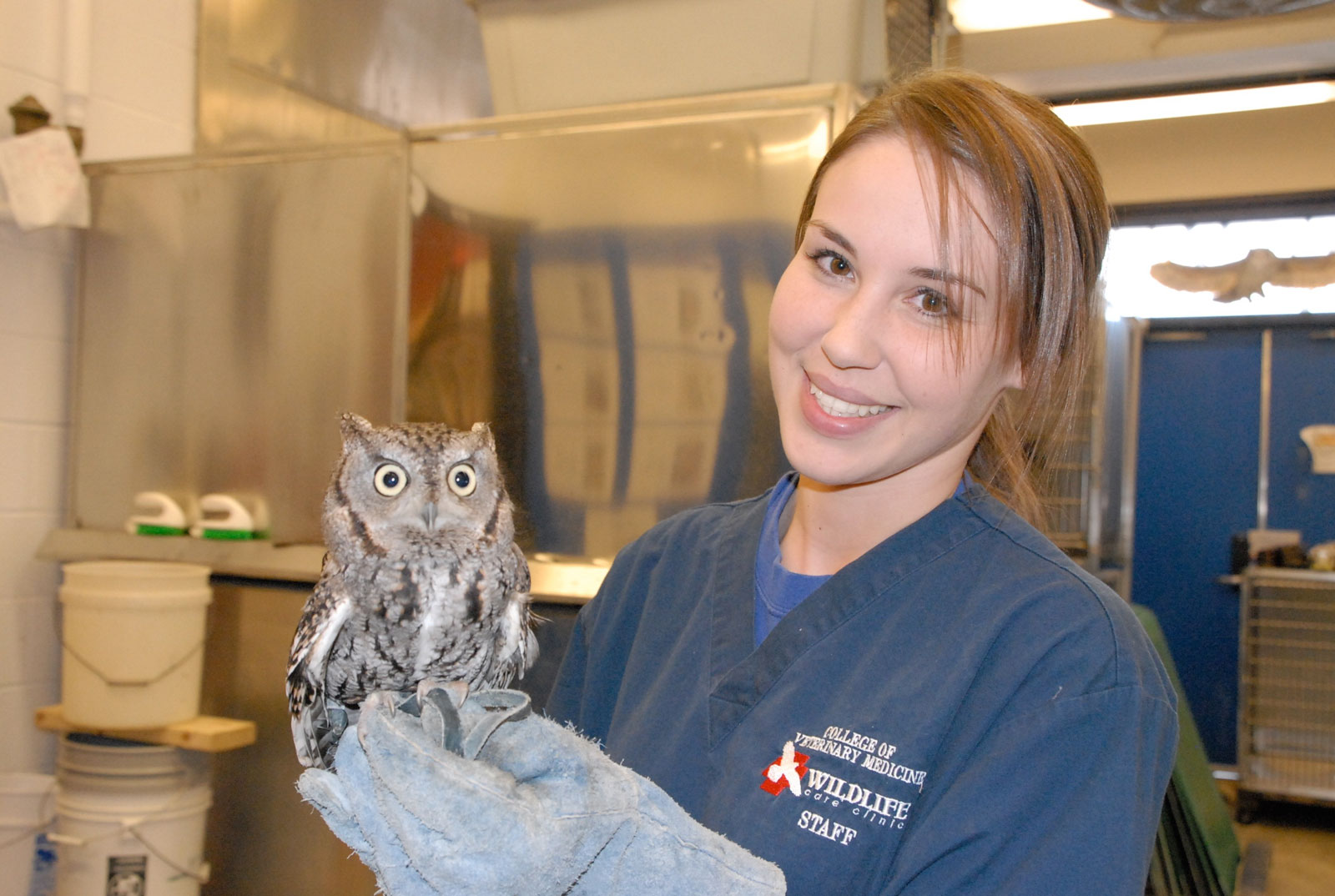
Swabbing An Owl And Other Tales Of Wildlife Care
Spring is a busy time at the Wildlife Care Clinic. Erica Eaves can attest to that. Early in April she spent one 10-hour day working with veterinarians trying to save a bobcat.
“The bobcat had been hit by a car and both its rear legs and pelvis were fractured,” Eaves says. “We spent most of the day with the bobcat, but it didn’t make it because its wounds were several days old.”
That was a trying day for Eaves, a junior in animal ecology, who is passionate about rehabilitating injured wild animals.
“It’s so rewarding to help animals and send them back to their natural habitat,” Eaves says.
Eaves knew she wanted to work with animals, but wasn’t interested in becoming a veterinarian. She didn’t know where her major would take her until she began working at the clinic. Now, she works 20 hours a week during the school year and up to 60 hours a week during the summer.
Walking through the three-room clinic, which is housed inside the Iowa State University Veterinary Medical Center, Eaves describes each animal’s history, injury and behavior.
“I grew up catching frogs and other animals in our yard,” Eaves says. “I always knew I wanted to do something with animals.”
As Eaves holds Screechy, an eastern screech owl and permanent resident at the clinic, she talks about how he hasn’t forgiven her for the daily cheek swabs she did last fall. The testing was part of her undergraduate research project comparing bacteria in the digestive tract of captive birds to birds in the wild. Her results and analysis showed there was a difference.
As Screechy eyes Eaves suspiciously, she explains that most animals in the clinic are not given names to prevent human attachment.
Next to Screechy’s cage is a one-winged American kestrel. Eaves says the kestrel was found on the tarmac at the Des Moines Airport, so she may have been hit by a plane. The doctors decided to amputate her wing to save her life.
“Most of our patients are here because of human contact,” Eaves says. “Many patients have been hit by cars, but several baby animals are brought in mistakenly because people think they are orphaned.”
The student-run clinic survives on donations and Eaves is enthusiastic about marketing the program and its educational events. After she graduates in 2011, Eaves plans to pursue a career in wildlife rehabilitation and work in a clinic similar to the one in Ames.



